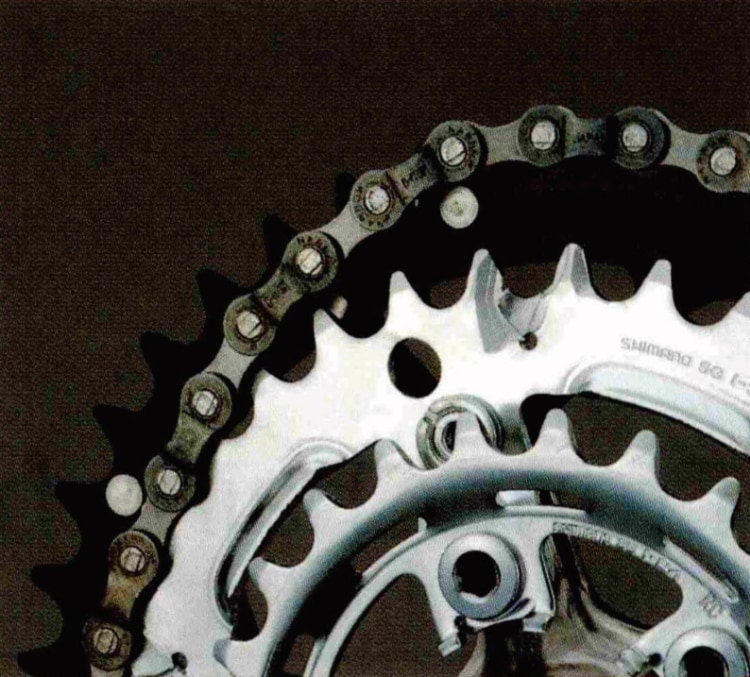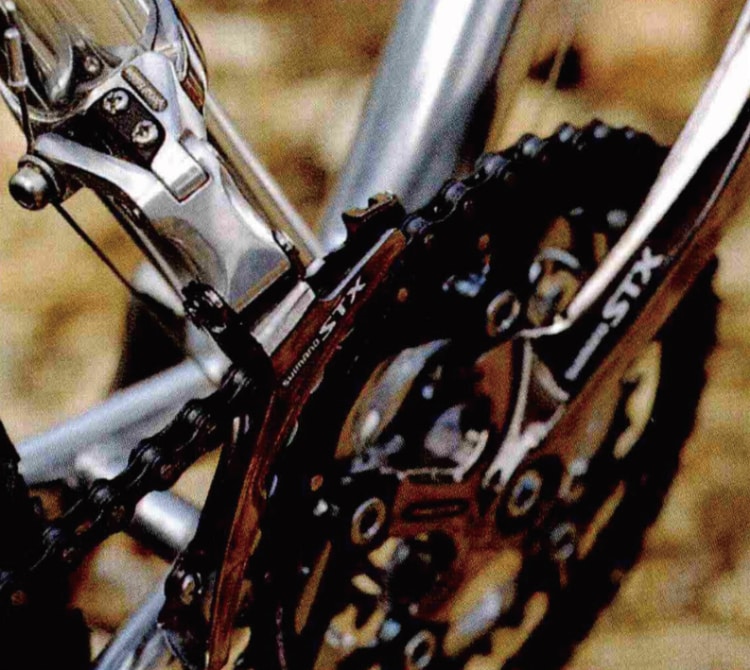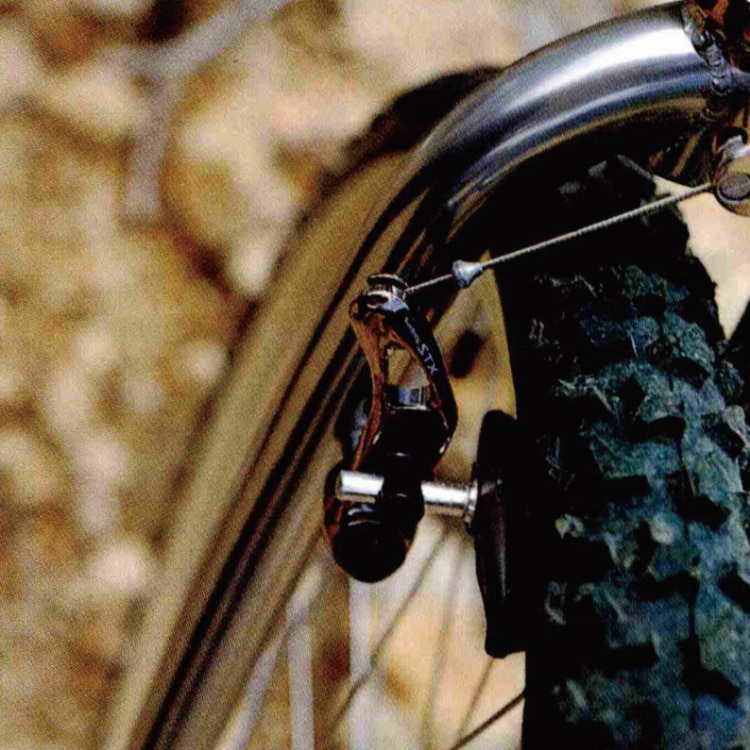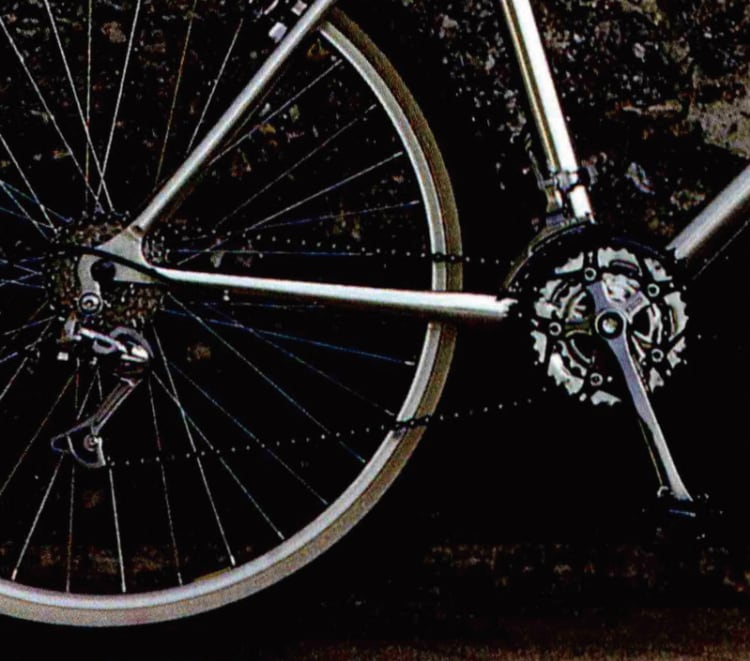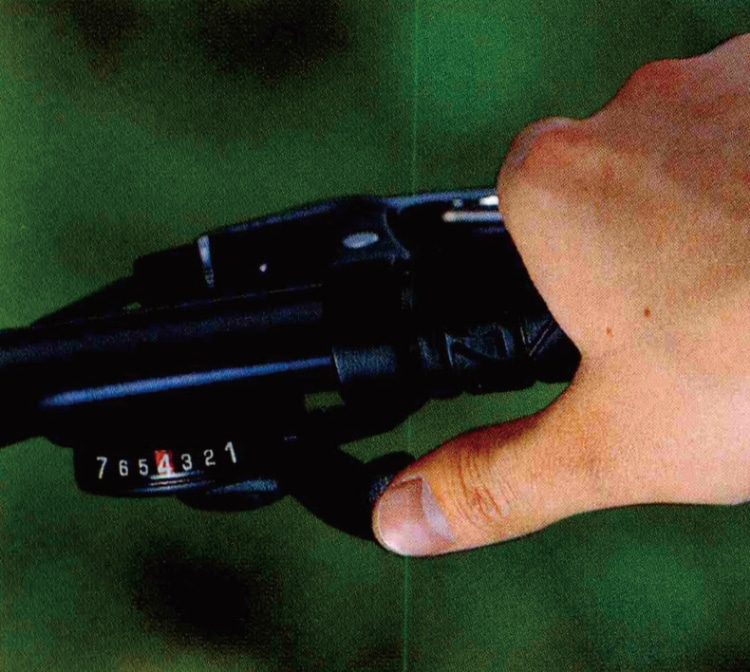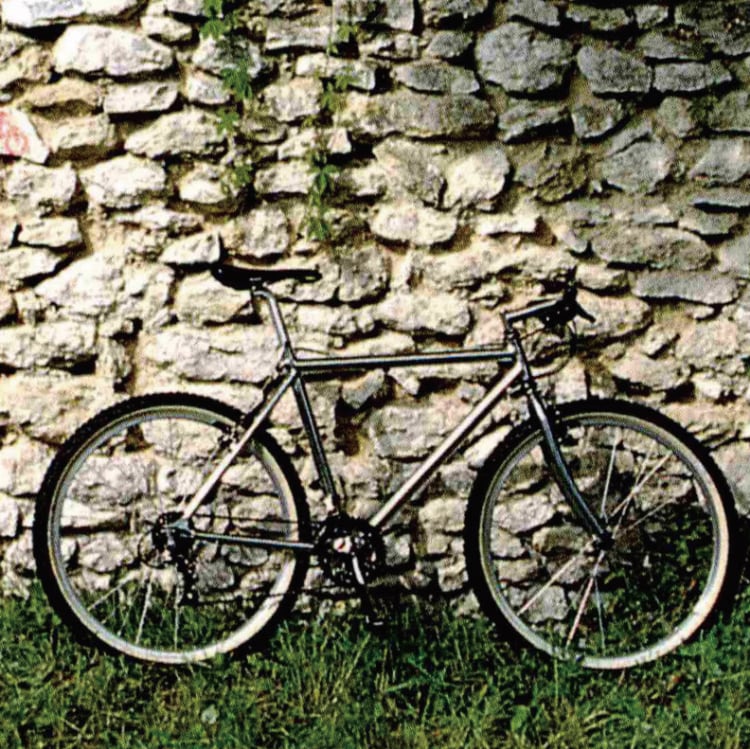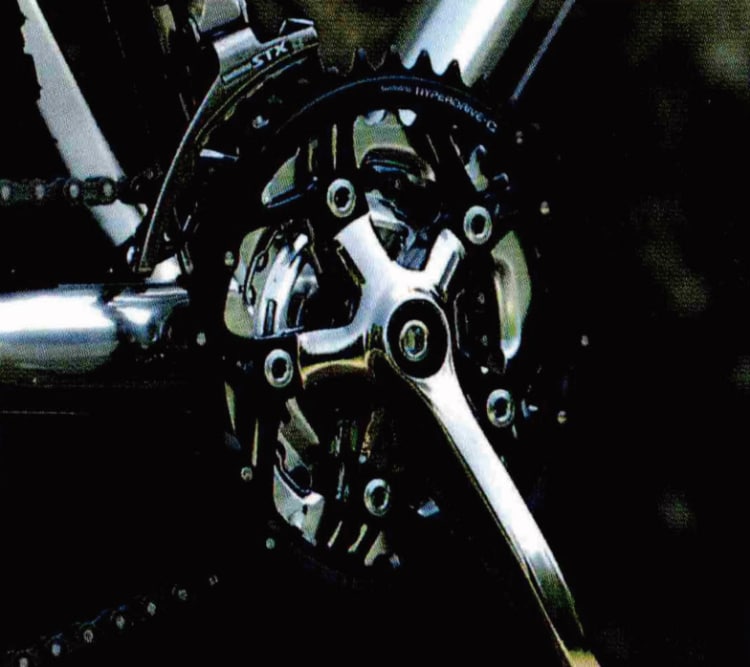STORY

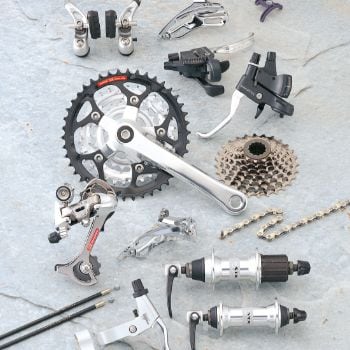
Turning the RIDE LIGHT Concept into Reality
In the early 1990s, mountain bikes gained more recognition than before; however, they were still rarely seen in cities and people could not buy them as easily as city bikes. A lifestyle incorporating sports bicycles equipped with derailleurs was not yet in reach for ordinary people. However, this was not because there was no such demand, but because there were no suitable bicycles and cycling had not obtained sufficient recognition to become widespread.
In 1991, the 70th anniversary of its founding, recognizing the need to propose a new lifestyle incorporating cycling, Shimano announced its corporate message of “Closer to Nature, Closer to People.” The RIDE LIGHT concept was announced in order to realize this corporate message in the bicycle field. RIDE LIGHT was a concept to promote the enjoyment of cycling among many more people with the slogan: “Lightness: a lighter and more responsive ride, a lighter look, a lighter control feeling, and reduced weight that makes the bicycle easier to handle.” In the hope of widening the circle of bicycle-loving people, making people’s lives richer and helping to conserve global environment, Shimano released STX, a components group dedicated to MTBs, in 1993 as a product that embodied such hope.
In 1991, the 70th anniversary of its founding, recognizing the need to propose a new lifestyle incorporating cycling, Shimano announced its corporate message of “Closer to Nature, Closer to People.” The RIDE LIGHT concept was announced in order to realize this corporate message in the bicycle field. RIDE LIGHT was a concept to promote the enjoyment of cycling among many more people with the slogan: “Lightness: a lighter and more responsive ride, a lighter look, a lighter control feeling, and reduced weight that makes the bicycle easier to handle.” In the hope of widening the circle of bicycle-loving people, making people’s lives richer and helping to conserve global environment, Shimano released STX, a components group dedicated to MTBs, in 1993 as a product that embodied such hope.
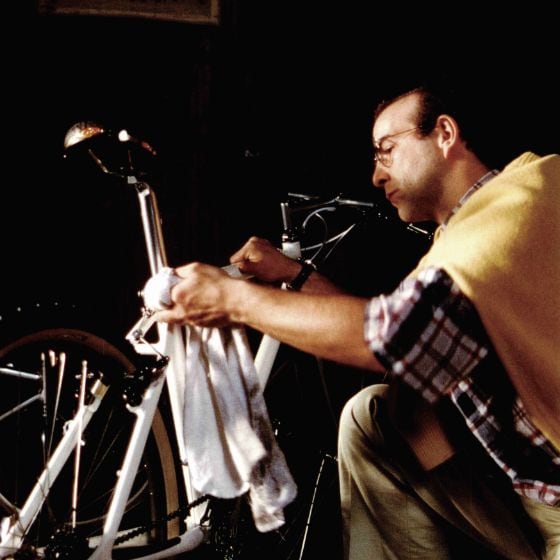
Thoughts Embraced in STX
Shimano wanted more people to enjoy riding a bicycle. To attain this goal, to begin with, it was necessary that people had an opportunity to ride a bicycle, found it worthwhile to ride a bicycle, and became aware that riding a bicycle was easy. To this end, Shimano decided to generously introduce state-of-the-art technologies developed for DURA-ACE and XTR not only into high-end models but also into middle-grade and entry-level models.
Although STX was positioned as a middle-grade components group, it had the latest features, including RAPIDFIRE PLUS levers, DUAL SIS, and M-SYSTEM. What Shimano especially focused on were Advanced Light Action, Optical Gear Display, and HyperDrive-C, which were features that truly symbolized the RIDE LIGHT concept.
Advanced Light Action offered a comfortable and light shifting feel, with lighter operation force based on the shifting operability achieved with RAPIDFIRE PLUS levers. Optical Gear Display was an indicator of the present gear position while the bicycle was moving, which made riders feel more connected to the shifters and improved the enjoyment of riding sports bikes. In the HyperDrive-C system, decreasing the number of gear teeth of the crankset and the number of gear teeth of the top gear of the rear derailleur achieved a wider gear ratio. This was an attempt to make the entire drivetrain system compact and light.
Conventionally, for middle-grade models, materials inferior in corrosion resistance and appearance quality had to be used; however, adopting the newly developed Kuromika plating (black tin-nickel alloy plating) technique improved the appearance.
The RIDE LIGHT concept of having more people discover the enjoyment of mountain bikes was rolled out in several subsequent product series, including SHIMANO ALIVIO, ACERA and ALTUS, in addition to STX, supporting the premium market segment, from middle-grade to entry-level models, of Shimano’s MTB components afterward. In the 1990s, people, regardless of age and sex, comfortably enjoying riding sports bikes were coming to be seen commonly in cities and the suburbs across the world. This showed that people’s perception of sports bikes had changed significantly.
Although STX was positioned as a middle-grade components group, it had the latest features, including RAPIDFIRE PLUS levers, DUAL SIS, and M-SYSTEM. What Shimano especially focused on were Advanced Light Action, Optical Gear Display, and HyperDrive-C, which were features that truly symbolized the RIDE LIGHT concept.
Advanced Light Action offered a comfortable and light shifting feel, with lighter operation force based on the shifting operability achieved with RAPIDFIRE PLUS levers. Optical Gear Display was an indicator of the present gear position while the bicycle was moving, which made riders feel more connected to the shifters and improved the enjoyment of riding sports bikes. In the HyperDrive-C system, decreasing the number of gear teeth of the crankset and the number of gear teeth of the top gear of the rear derailleur achieved a wider gear ratio. This was an attempt to make the entire drivetrain system compact and light.
Conventionally, for middle-grade models, materials inferior in corrosion resistance and appearance quality had to be used; however, adopting the newly developed Kuromika plating (black tin-nickel alloy plating) technique improved the appearance.
The RIDE LIGHT concept of having more people discover the enjoyment of mountain bikes was rolled out in several subsequent product series, including SHIMANO ALIVIO, ACERA and ALTUS, in addition to STX, supporting the premium market segment, from middle-grade to entry-level models, of Shimano’s MTB components afterward. In the 1990s, people, regardless of age and sex, comfortably enjoying riding sports bikes were coming to be seen commonly in cities and the suburbs across the world. This showed that people’s perception of sports bikes had changed significantly.






